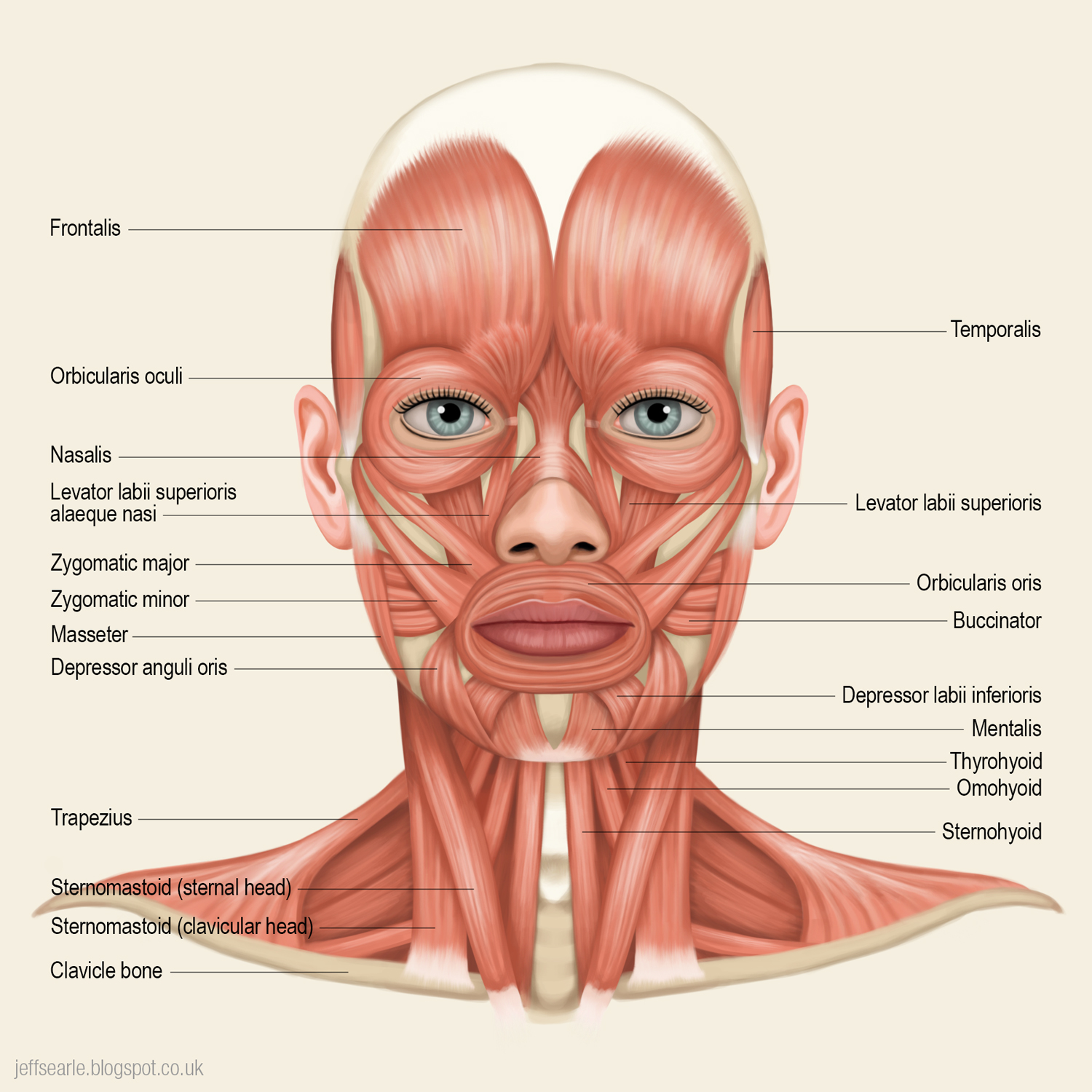Presentation Skills: Body Language While You’re Talking, What Is Your Body Saying? More than half of your impact as a speaker depends upon your body language.
Save time learning, be better prepared and learn everything about this topic: Overview of the muscles responsible for facial expression.
The facial muscles are a group of striated skeletal muscles supplied by the facial nerve (cranial nerve VII) that, among other things, control facial expression. These muscles are also called mimetic muscles.
Muscles of Facial Expression Frontalis –Elevates eyebrows –Wrinkles forehead –Innervation Temporal branch of Facial nerve
A facial expression is one or more motions or positions of the muscles beneath the skin of the face. According to one set of controversial [citation needed] theories, these movements convey the emotional state of an individual to observers.

The there are many muscles which are responsible for facial expressions. Find out which muscles are responsible for smiling, frowning, winking and kissing


:watermark(/images/watermark_5000_10percent.png,0,0,0):watermark(/images/logo_url.png,-10,-10,0):format(jpeg)/images/atlas_overview_image/241/mjeWZH74MDWMC5L9gRD8lg_facial-muscles_english.jpg)


Observer-Based Measurement of Facial Expression With the Facial Action Coding System 205 novo, rarely making use of the work of their predecessors.

Basic research leads to training programs that improve people’s ability to detect emotions.
This is an article on the anatomy and functions of the muscles of the face. Learn all about the muscles of facial expression here.

The muscles of facial expression are located in the subcutaneous tissue, originating from bone or fascia, and inserting onto the skin. By contracting, the muscles pull on the skin and exert their effects.

